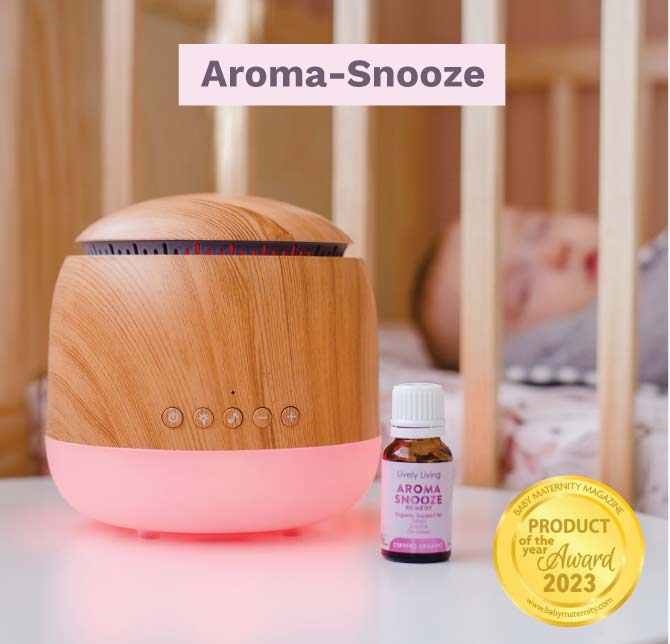A Parent's Guide to Common Illnesses in Babies and Toddlers
Those tiny humans we bring into the world, our babies and toddlers, are bundles of joy, but they are also prone to common illnesses. As parents, it can be both worrying and exhausting as we deal with these common childhood illnesses. You find yourself constantly checking temperatures, scrutinizing every sniffle, and deciphering cries that could mean anything from 'I'm hungry' to 'I feel awful.'
Rest assured, though, almost every parent goes through this. This guide will provide helpful information about common illnesses in babies and toddlers. We’ll cover the signs and symptoms, some potential remedies, and when to seek medical attention.
Table Of Contents:
Common Illnesses in Babies and Toddlers
It's impossible to prevent every cough and sniffle (trust me, I've tried.). But, being informed about common child illnesses helps you feel more in control and prepared. Knowing about common childhood rashes can also help prepare you. Let's delve into some common illnesses:

1. Colds
The common cold is a frequent visitor in households with little ones. They are caused by viruses, and because young children's immune systems are still developing, they are more susceptible to catching colds.
Signs and Symptoms of Colds in Babies and Toddlers:
- Runny nose (clear, white, or yellow mucus)
- Stuffy nose
- Sneezing
- Cough
- Sore throat
- Mild fever (usually below 101°F)
- Fussiness
- Decreased appetite
Remedies:
While there is no cure for the common cold, you can help relieve your little one's symptoms:
- Keep them hydrated with breast milk, formula, or water.
- Use a humidifier or a Nasal Aspirator to help clear congestion.
- Give them plenty of rest.
When to see a doctor:
- If your baby is younger than three months old and has a fever
- If your child has difficulty breathing
- If the fever lasts longer than three days
- If you notice any signs of dehydration (fewer wet nappies than usual, lethargy, dry mouth, crying without tears)
2. Ear Infections
You know the classic ear tug? That’s a big red flag, although not every tug indicates an ear infection. The American Academy of Pediatrics points out the frequency of ear infections in children compared to adults.
It all boils down to the size and shape of the Eustachian tubes (those tiny channels connecting the middle ear to the back of the throat) in children. The shape of children's Eustachian tubes makes it easier for fluid to become trapped, leading to infections. If your child has recurrent ear infections, this could signal a more significant underlying condition like allergies, requiring more targeted management. Here’s what to watch for:
- Ear pain, especially when lying down.
- Fever.
- Irritability, fussiness.
- Fluid draining from the ear.
- Loss of appetite.
Remedies:
Your doctor will recommend the best course of action to treat an ear infection, which may include antibiotics. They may also recommend pain relief measures or a Nasal Aspirator & Humidifier
When to see a doctor:
It's essential to consult a pediatrician for any ear infection symptoms, as prompt treatment is crucial for preventing complications.
3. Stomach Flu (Gastroenteritis)
Stomach flu, a highly contagious viral infection, can spread rapidly through daycare centers and families. It affects the stomach and intestines, causing a lot of discomfort.
Signs and Symptoms:
- Vomiting
- Diarrhea
- Abdominal cramps
- Fever
- Loss of appetite
Remedies:
Preventing dehydration is extremely important. You should frequently offer small sips of an electrolyte solution like Pedialyte or the oral rehydration solution (ORS) recommended by your pediatrician.
When to see a doctor:
It's essential to seek immediate medical advice if you notice signs of dehydration, blood in vomit or stool, severe abdominal pain, or if your child is not able to keep down any fluids. If your child is experiencing a persistent cough, you should also seek medical advice from your doctor or a 24 hour health advice hotline.
4. Hand, Foot, and Mouth Disease
Don't let the name alarm you; hand, foot, and mouth disease is usually a mild, contagious viral illness.
Signs and Symptoms:
- Fever
- Sore throat
- Painful sores in the mouth
- Blisters on the hands, feet, and sometimes buttocks
Remedies:
The best approach is to make your little one as comfortable as possible by relieving their symptoms. Keep them well-hydrated and offer soft foods that are easy to swallow.
When to see a doctor:
If your child is not drinking enough fluids, has severe sores that make it hard to swallow, has a weakened immune system, or experiences any worsening of symptoms, a doctor’s visit is best. If your baby has blue skin, this is an emergency and you should seek medical attention immediately by calling 911 or going to the nearest emergency department.
5. Respiratory Syncytial Virus (RSV)
RSV is very common and highly contagious, affecting the respiratory system. For most children, it seems like a cold, but for some, it can be more serious.
Signs and Symptoms:
- Runny nose
- Cough
- Fever
- Wheezing
Remedies:
Treating RSV focuses on symptom management and making sure your child stays hydrated. A cool-mist humidifier can be helpful. Severe drowsiness is a serious symptom and you should consult a doctor immediately if your child is experiencing this.
In more severe cases, your doctor might recommend hospitalization for oxygen therapy or other supportive care. You may even need to take them to a children's hospital where they specialize in more serious childhood illnesses.
When to see a doctor:
Seek prompt medical care if your child has difficulty breathing, is not drinking enough, has a high temperature, or shows any signs of lethargy or dehydration.
6. Croup
Croup is a common respiratory infection that primarily affects babies and young children. It's characterized by a distinctive barking cough, which often worsens at night. This barking cough is due to inflammation of the larynx (voice box) and trachea (windpipe).
Signs and Symptoms:
- Barking cough
- Hoarse voice
- Difficulty breathing, which may be accompanied by a high-pitched whistling sound (stridor) when inhaling
- Fever (may not always be present)
Remedies:
- Keep your child calm and comforted, as crying can worsen breathing difficulties.
- Use a cool-mist humidifier or let your child breathe in the steam from a hot shower or bath (with supervision). The moist air can help soothe inflamed airways.
- Ensure your child drinks plenty of fluids to stay hydrated.
- Elevate your child's head with pillows while they're resting.
When to See a Doctor:
While mild cases of croup can often be managed at home, it's essential to seek medical attention if:
- Your child's breathing becomes increasingly labored.
- You notice stridor (high-pitched whistling sound) even when your child is resting.
- Your child's lips or skin start to turn blue (cyanosis).
- Your child is excessively drooling or has difficulty swallowing.
- Symptoms worsen or don't improve after trying home remedies.
- Your child has a history of croup or other breathing problems.
Conclusion
Navigating common illnesses in babies and toddlers is a universal experience for parents. With some understanding and watchful eyes, we can handle those challenging moments, offering the best care possible. Remember to rely on credible sources like the Mayo Clinic, the CDC, and of course, your trusted pediatrician.
Common illnesses in babies and toddlers are a normal part of their development. Knowing how to care for your sick child during these times provides you with invaluable peace of mind. Lively Living offer a range of products, to help your child breathe and sleep more comfortably.
Yours in good health
Lively Living






















